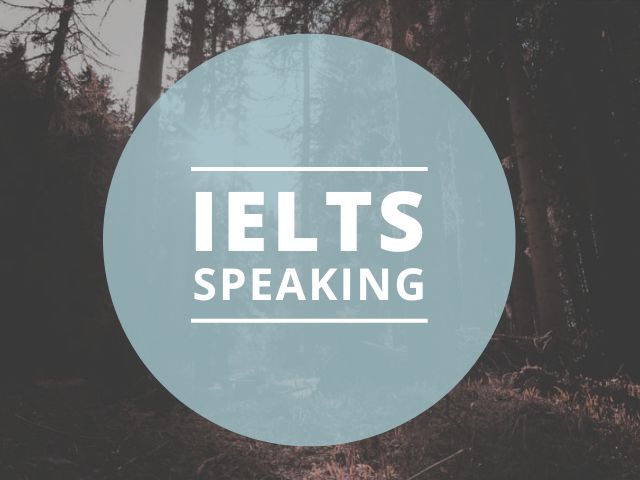Bài Dịch Việt Anh 50 (Phần 2) về đầu tư nước ngoài
Gián tiếp:
§ He said that he will come tomorrow. (hoặc: He said that he would come tomorrow).
Trực tiếp:
§ She said, “My father left on Sunday”.
Gián tiếp:
§ She said that her father left on Sunday. (hoặc: She said that her father had left on Sunday.)
2.3 Các thay đổi ở từ chỉ khái niệm gần / xa. (Changes in words suggesting nearness and remoteness.)
2.3.1 Thay đổi ở Đại từ:
Các đại từ nhân xưng (personal pronouns) và đại từ sở hữu possessive pronouns) khi chuyển từ lời nói trực tiếp sang gián tiếp thay đổi như sau:
§ 1. Đại từ nhân xưng: Chủ ngữ: I = he, she; we = they; you = they
§ 2. Đại từ nhân xưng: Tân ngữ: me = him, her; us = them; you = them
§ 3. Đại từ sở hữu: my = his, her; our = their; your = their; mine = his, hers; ours = theirs; yours = theirs.
Ngoài quy tắc chung về thay đổi đại từ được nêu trên, chúng ta cũng cần chú ý đến những thay đổi khác liên quan đến đến vị trí tương đối của người đóng vai trò thuật lại (reporter) trong các ví dụ sau đây:
§ A: B, you should listen to me.
§ A: tự thuật lại lời nói của mình: I told B that he should listen to me.
§ Người khác thuật lại lời nói của A: A told B that he should listen to her.
§ Người khác thuật lại cho B nghe: A told you that you should listen to her.
§ B thuật lại lời nói của A: A told me that I should listen to her.
Trong các bài tập về lời nói trực tiếp và gián tiếp, chúng ta thường đóng vai trò nguời ngoài cuộc, do đó cách chuyển đổi thường như sau:
Trực tiếp:
§ I clean my car every day; the car in the garage is mine.
Gián tiếp:
§ He said that he cleaned his car every day; the car in the garage was his. She said that she cleaned her car every day; the car in the garage was hers.
Đôi khi người thuật lại thay đổi vài từ trong lời nói gián tiếp để tránh hiểu lầm:
Trực tiếp:
§ Tom said, “He broke into the bank”.
§ Tom said that he had broken into the bank. Bởi vì người nghe có thể hiểu lầm rằng chính Tom đã đột nhập vào ngân hàng. Chúng ta nên nói:
§ Tom said that the man/the burglar had broken into the bank.
2.3.2 Các thay đổi ở danh từ và phó từ chỉ khái niệm gần xa trong không gian và thời gian:
| Trực tiếp | Gián tiếp |
this these here now today ago tomorrow the day after tomorrow yesterday the day before yesterday next week next year last week last year | that those there then that day before the next day, the following day in two days’ time the day before/the previous day two days before the following week the following year the previous/the following week the previous/the following year |
Trực tiếp:
§ I saw the boy here in this room today.
Gián tiếp:
§ He said that he had seen the boy there in that room that day.
Trực tiếp:
§ I will read these letters now.
Gián tiếp:
§ He said that he would read those letters then.
Ngoài quy tắc chung trên đây, người học cần nhớ rằng tình huống thật và thời gian khi hành động được thuật lại đóng vai trò rất quan trọng trong khi chuyển từ lới nói trực tiếp sang lời nói gián tiếp.
Trực tiếp:
§ Mary: I once spent a summer here in this village.
Thông thường chúng ta chuyển câu trên sang lời nói gián tiếp như sau:
Gián tiếp:
§ Mary said that she (had) once spent a summer there in that village.
§ Mary said that she (had) once spent a summer here in this village.
Nhưng nếu người thuật lại đang ở trong ngôi làng nơi Mary đã nghỉ hè, câu trên có thể đổi là:
Chúng ta hãy xem thêm ví dụ sau:
Trực tiếp:
§ John: I shall go to Paris before the end of this month.
Nếu câu nói của John được thuật lại trước cuối tháng này, chúng ta không cần thay đổi thì và this month.
§ John said that he will go to Paris before the end of this month.
§ John said that he would go to Paris before the end of this month.
§ John said that he would go to Paris before the end of last month.
§ John said that he would go to Paris before the end of that month.
Hoặc nếu chúng ta muốn:
Nếu câu nói của John được thuật lại vào tháng kế tíếp sau đó, will sẽ được chuyển thành would và this month thành last month.
Nếu câu nói của John được thuật lại vài tháng sau đó, this month sẽ trở thành that month:
2.4 Câu hỏi trong lời nói gián tiếp (Questions in Indirect speech)
§ Câu hỏi trong lời nói gián tiếp được chia làm 2 loại:
a) Câu hỏi bắt đầu bằng Who, Whom, What, Which, Where, When, Why, How:
Trực tiếp:
§ What is your name?
Gián tiếp:
§ He asked me what my name was.
Trực tiếp:
§ Where does she live?
Gián tiếp:
§ He asked where she lived.
Trực tiếp:
§ Why did you go to school late?
Gián tiếp:
§ He asked me why I had gone to school late?
b) Câu hỏi bắt đầu với các trợ động từ (auxiliary verbs), các động từ BE và HAVE:
Trực tiếp:
§ Is she your sister?
Gián tiếp:
§ He asked me if she was my sister.
Trực tiếp:
§ Can she drive?
Gián tiếp:
§ He asked me if she could drive.
Trực tiếp:
§ Does John understand music?
Gián tiếp:
§ He asked if John understood music.
Trực tiếp:
§ I have left my watch at home. Can you tell me the time?
Gián tiếp:
§ He said that he had left his watch at home and asked me if I could tell him the time.
§ She asked me if she was my sister. = He asked me whether she was my sister.
Trong các lời nói gián tiếp trên đây, IF được dùng để chỉ câu hỏi gián tiếp và thường có nghĩa “có phải …. không?). IF thường được thay thế bằng WHETHER.
WHETHER thường diễn tả sự lựa chọn và thường được theo sau bởi OR:
Trực tiếp:
§ Do you want to go by air or by sea?
Gián tiếp:
§ He asked me whether I wanted to go by air or by sea.
Trực tiếp:
§ Do you want to insure your car or not?
Gián tiếp:
§ He asked whether or not I wanted to insure my car? hoặc
§ He asked if I wanted to insure my car or not.
WHETHER thường đuợc xem là thích hợp hơn IF khi đi trước các động từ nguyên mẫu (infinitive) và các câu điề kiện:
§ I don’t know whether to stay here or go on.
§ John asked whether, if I got the job, I’d move to New York.
2.5 Các dạng đặc biệt của câu hỏi trong lời nói gian tiếp. (Special constructions of questions in indirect speech).
2.5.1 Shall/Would dùng để diễn tả đề nghị, lời mời:
Trực tiếp:
§ Shall I bring you some tea?
Gián tiếp:
§ He offered to bring me some tea.
Trực tiếp:
§ Shall we meet at the theater?
Gián tiếp:
§ He suggested meeting at the theater.
Trực tiếp:
§ Would you like a drink?
Gián tiếp:
§ He offered me a drink. hoặc: He asked if I would like a drink.
Dạng câu hỏi với “Shall I?” đôi khi chỉ diễn tả tương lai đơn thuần (pure future). Trong trường hợp này chúng ta có thể chuyển đổi như sau:
Trực tiếp:
§ Shall I ever forget her?
Gián tiếp:
§ He wondered if he would ever forget her.
2.5.2 Will/Would dùng diễn tả sự yêu cầu:
Trực tiếp:
§ Will you help me, please?
Gián tiếp:
§ He asked me to help him.
Trực tiếp:
§ Will/Would you lend me your dictionary?
Gián tiếp:
§ He asked me to lend him my dictionary.
3.6 Câu mệnh lệnh và câu yêu cầu trong lời nói gián tiếp. (Commands and requests in indirect speech)
Trực tiếp:
§ Go away!
Gián tiếp:
§ He told me/the boy to go away.
Trực tiếp:
§ Listen to me, please.
Gián tiếp:
§ He asked me to listen to him.
Trực tiếp:
§ Don’t be late tomorrow.
Gián tiếp:
§ He told them not to be late the next day.
Tùy theo nội dung và ý nghĩa của lời nói trực tiếp, chúng ta có thể lựa chọn một động từ thích hợp cho lời nói gián tiếp:
Trực tiếp:
§ “Do sit down.” said my hostess.
Gián tiếp:
§ My hostess invited me to sit down.
Trực tiếp:
§ “Please, please don’t take any risks”, said his wife.
Gián tiếp:
§ His wife begged him not to take any risks.
Trực tiếp:
§ “Try again,” said Ann’s friends encouragingly.
Gián tiếp:
§ Ann’s friends encouraged her to try again.
Trực tiếp:
§ “Be quiet, will you!”
Gián tiếp:
§ He ordered us to be quiet.
Trực tiếp:
§ He said, “If she leaves the house follow her.”
Gián tiếp:
§ He said that if she left the house I was to follow her.
Trực tiếp:
§ “Let’s go to the seaside next weekend”, John said.
Gián tiếp:
§ John suggested that they should go to the seaside the following weekend.
Trực tiếp:
§ He said, “If your breakes are bad, don’t drive too fast.”
Gián tiếp:
§ He advised me not to drive so fast if my brakes were bad.
hoặc:
§ He said that if my brakes were bad I shouldn’t drive so fast.
2.7 Câu cảm thán trong lời nói gián tiếp. (Exclammations in indirect speech)
Trực tiếp:
§ What a lovely dress!
§ She exclaimed that the dress was lovely.
§ She exclaimed that the dress was a lovely one.
§ She exclaimed with admiration at the sight of the dress.
Tùy theo cảm xúc và hình thức diễn đạt, chúng ta có thể dùng nhiều hình thức khác nhau như:
Nói chung, các hình thức cảm thán bắt đầu bằng What và How như:
§ What a big egg! How dreadful! có thể chuyển sang lời nói gián tiếp bằng:
§ He said that it was a big egg.
§ He exclaimed that it was dreadful.
Chúng ta cần chú ý thêm một số ví dụ khác:
Trực tiếp:
§ He said, “Thank you!”
Gián tiếp:
§ He thanked me.
Trực tiếp:
§ He said, “Welcome!”
Gián tiếp:
He welcomed me.
Trực tiếp:
§ He said, “Happy Christmas!”
Gián tiếp:
§ He wished me a happy Christmas.
Trực tiếp:
§ He said, “Liar!”
Gián tiếp:
§ He called me a liar.
2.8 Các hình thức hỗn hợp trong lời nói gián tiếp. (Mixed forms in indirect speech)
Lời nói trực tiếp có thể bao gồm nhiều hình thức hỗn hợp: câu xác định, câu hỏi, câu mệnh lệnh và câu cảm thán:
Trực tiếp:
§ He said, “Can you play the guitar?” and I said “No”.
Gián tiếp:
§ He asked me if I could play the guitar and I said that I couldn’t.
Trực tiếp:
§ “I don’t know the way. Do you?” he asked.
Gián tiếp:
§ He said that he didn’t know the way and asked her if she knew it.
Trực tiếp:
§ “I’m going shopping. Can I get you something?” she said.
Gián tiếp:
§ She said that she was going shopping and asked if she could get me anything.
Trong vài trường hợp, chúng ta có thể chuyển một mệnh đề trong lời nói trực tiếp sang cụm phân từ (participial phrase):
Trực tiếp:
§ “Please, please don’t drink too much! Remember that you’ll have to drive home”, she said.
Gián tiếp
§ She begged him not to drink too much, reminding him that he’d have to drive home.
2.9 Các động từ dùng để giới thiệu trong lời nói gián tiếp. (Introductory verbs in indirect speech)
a) SAY có thể dùng trước hoặc sau lời nói trực tiếp:
§ John said, “I am hungry.” hoặc “I am hungry”, John said.
Khi SAY theo sau lời nói trực tiếp chúng ta có thể đảo ngược vị trí của chủ ngữ và động từ SAY với điều kiện chủ ngữ là một danh từ:
§ “I am hungry”, said John. not: “I am hungry”, said he.
SAY có thể nằm giữa câu:
§ “As a result”, said John, “I am very hungry.”
SAY TO + tân ngữ có thể được đặt ở cuối câu:
§ “I’m hungry”, John said to me. Nhưng chúng ta không nói: John said to me, “I’m hungry.”
Với lời nói gián tiếp, chúng ta có thể dùng SAY TO + tân ngữ nhưng hình thức với TELL + tân ngữ thường được dùng hơn.
b) TELL luôn luôn phải đi với một tân ngữ. Với lời nói trực tiếp, TELL + tân ngữ luôn luôn được đặt sau:
§ “I’m hungry”, John told me.
§ John told me that he was hungry.
Với lời nói gián tiếp TELL + tân ngữ luôn luôn đi trước:
c) Nhiều động từ khác có thể dùng để giới thiệu lời nói trực tiếp và gián tiếp:
Trực tiếp:
§ “I love you”, he whispered.
Gián tiếp:
§ He whispered that he loved her.
Trực tiếp:
§ “We are not very late”. Tom assured us.
Gián tiếp:
§ Tom assured us that we were not very late.
Trực tiếp:
§ “I‘ll marry you”, he promised.
Gián tiếp:
§ He promised that he would marry her.
Trực tiếp:
§ “I live here”, he explained.
Gián tiếp:
§ He explained that he lived here.
Trực tiếp:
§ “I’m tired”, she complained.
Gián tiếp:
§ She complained that she was tired.
End of Lesson
Hết phần Bài dịch 50.
Nguyễn Văn Công – 7 May 13




